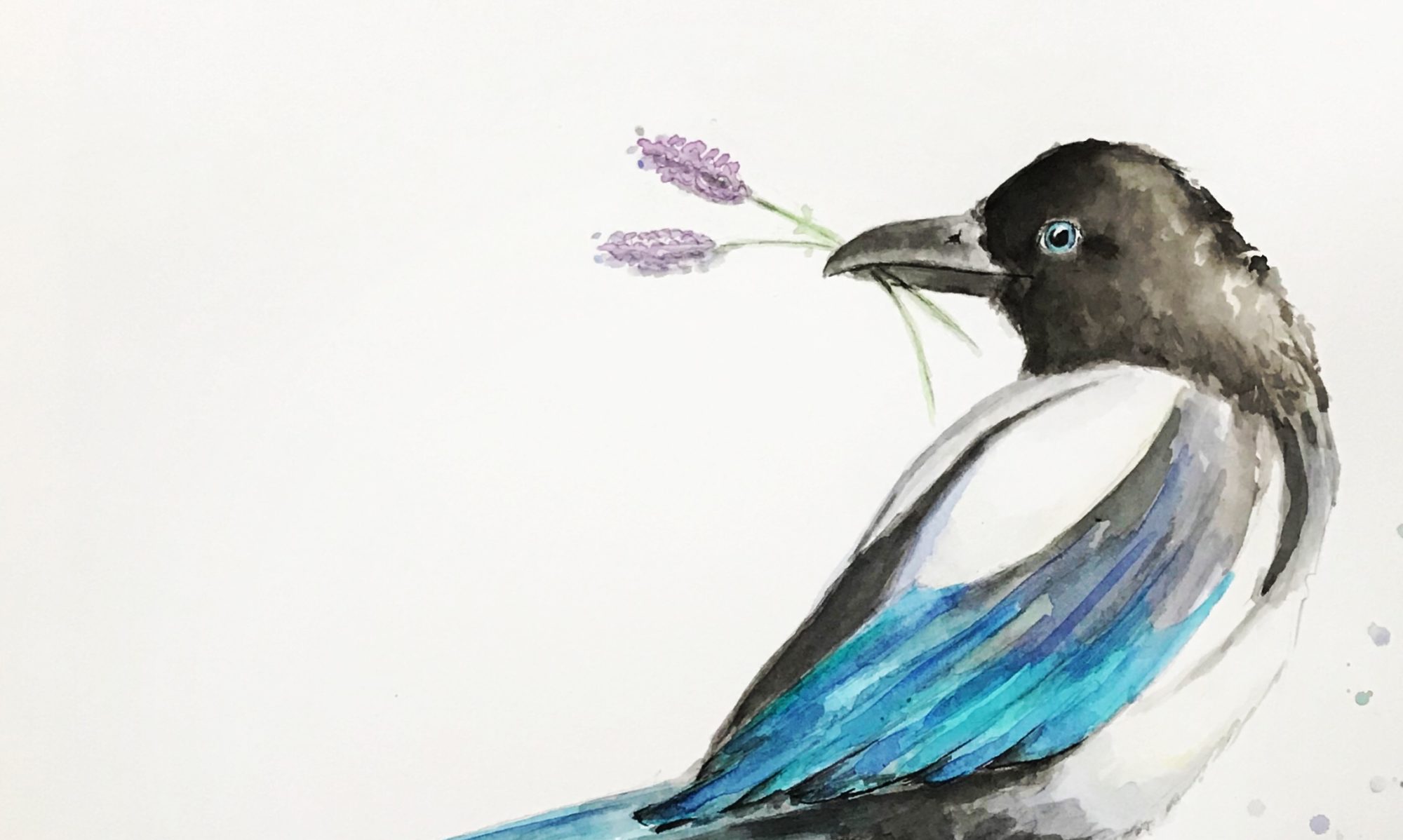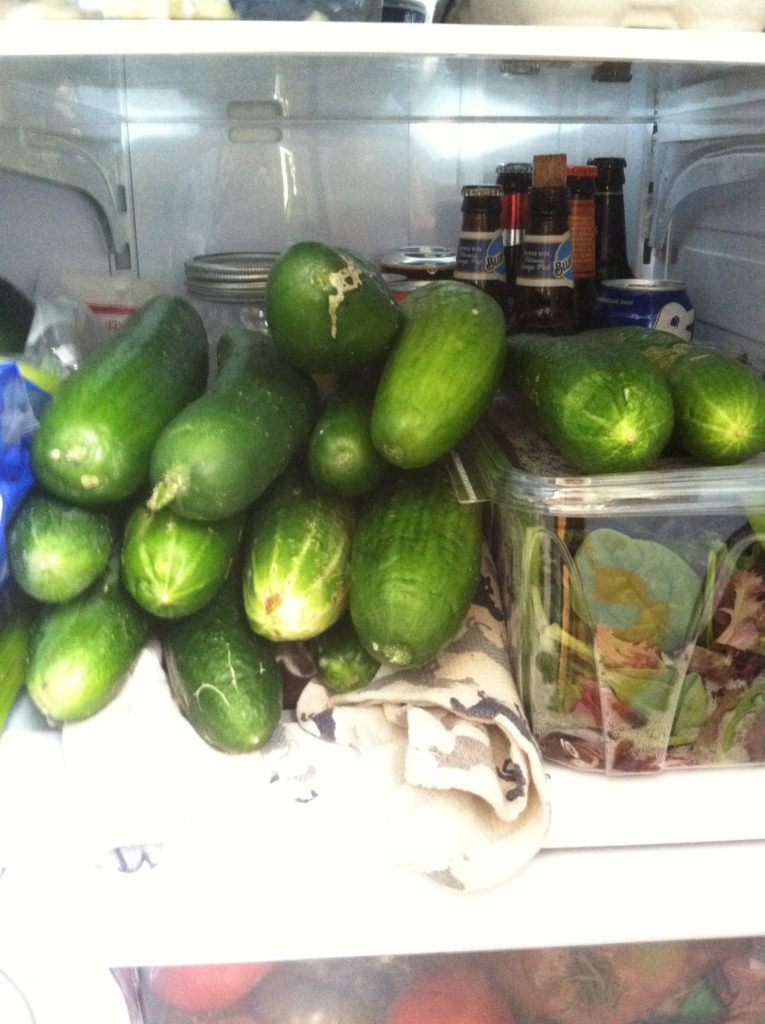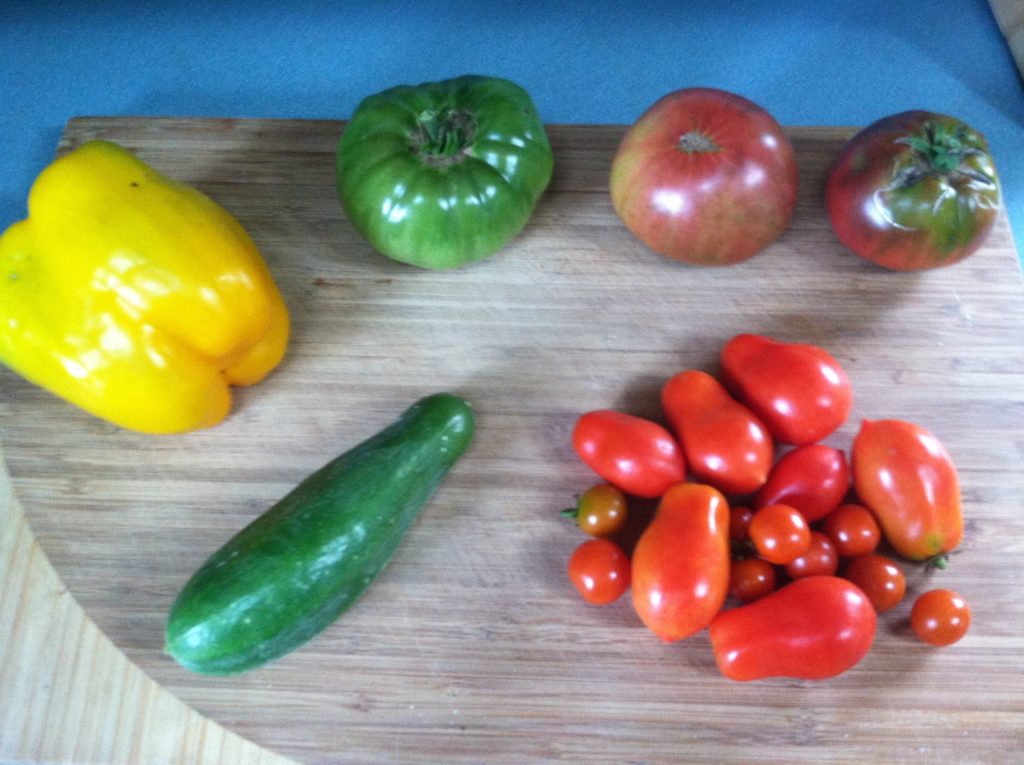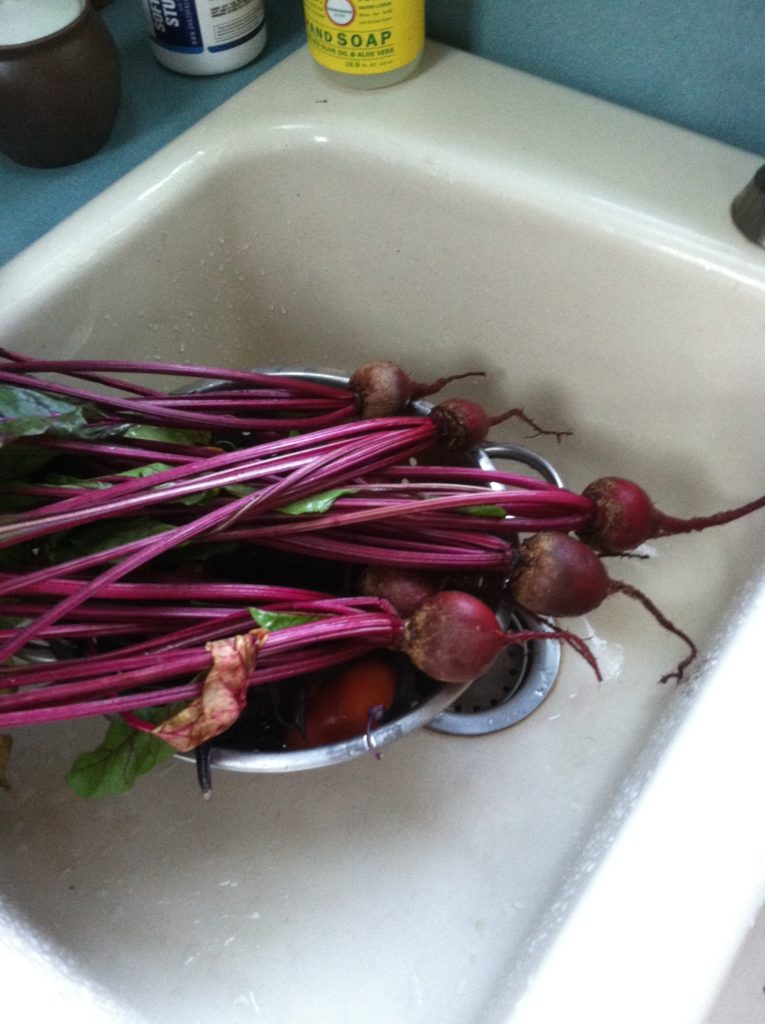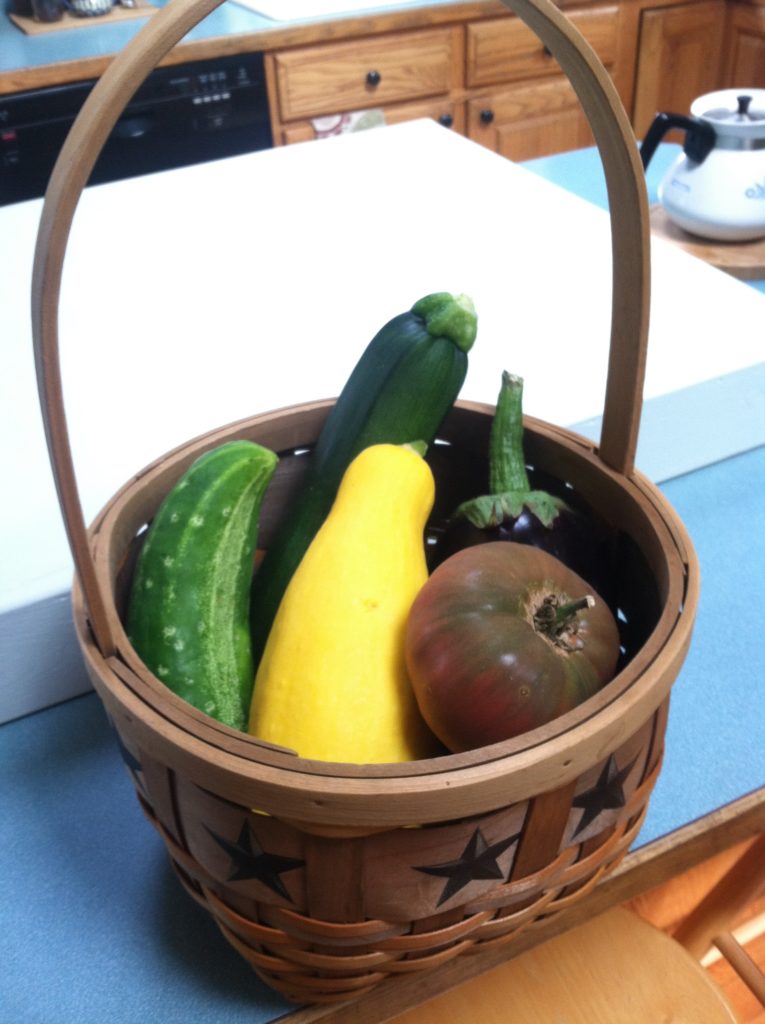The house is cool and quiet at Sweet Birch Homestead today; the ticking of the baseboards and intermittent rustling of the furnace the only audible interruptions in an otherwise serene environment. The world outside it coated in a crust of hardened snow. Yesterday we received a few inches of dry, fluttery flakes but by early afternoon it had changed to tiny spheres of frozen rain. The resulting rind of layered precipitation is slick and ungiving, requiring forced effort to punch through it rather than glide across. Deciduous trees stand stark against an otherwise milky backdrop in the snapshot I’m observing from my bedroom window. It is a balmy 1 degree outside on this January morning, but I am warm indoors and dreaming, as I often do, of the gardens sleeping soundly below the snow.
I’m not really sure when it was when my interest in gardening presented itself. I remember my parents tending to a small in-ground plot as a youth in my childhood home, but I myself wasn’t very involved beyond snacking on the ripe cherry tomatoes in July or playing with the hornworm caterpillars that plagued their vines. When I moved to a rental space with a small yard a few years back, (setting some literal and figurative roots after traveling post-college), I felt compelled to try growing some of the herbs I’d become familiar with in teas and tinctures. Opting for container gardens was a cost-effective way to try out this new hobby and after one season, I was enamored with horticulture.
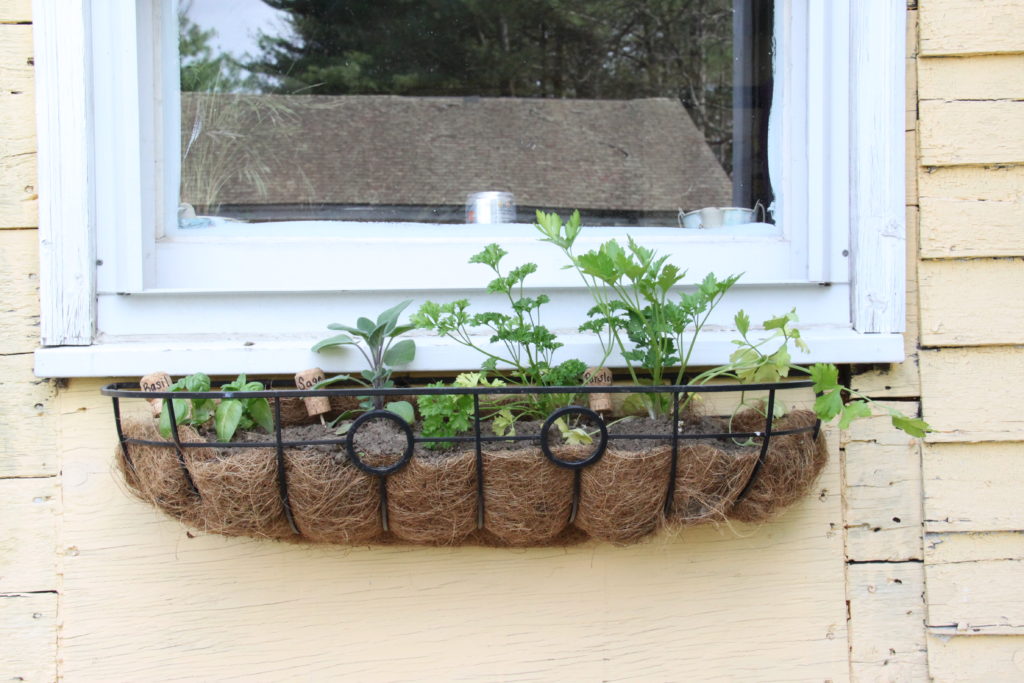
The following year I scraped the grass from a small section in the side yard to try my hand at growing some vegetables in addition to my herbal allies. How hard can it be? I remember thinking, plugging my seedlings into the dusty soil. My herbs did great in this location, growing large and wild as they’re apt to do and imagine my surprise when I harvested a pepper and some zucchini! Alas, between the weeds (I never tilled), the poor soil (I never tested, nor amended) and the sunblock of a fence against the mid-afternoon sun, I really only did get that one green pepper and a handful of skinny cucurbits. As it turned out, however, these small successes were all that was needed to incite my passion for growing and I had gardens on my mind when I began hunting for new housing in late summer.
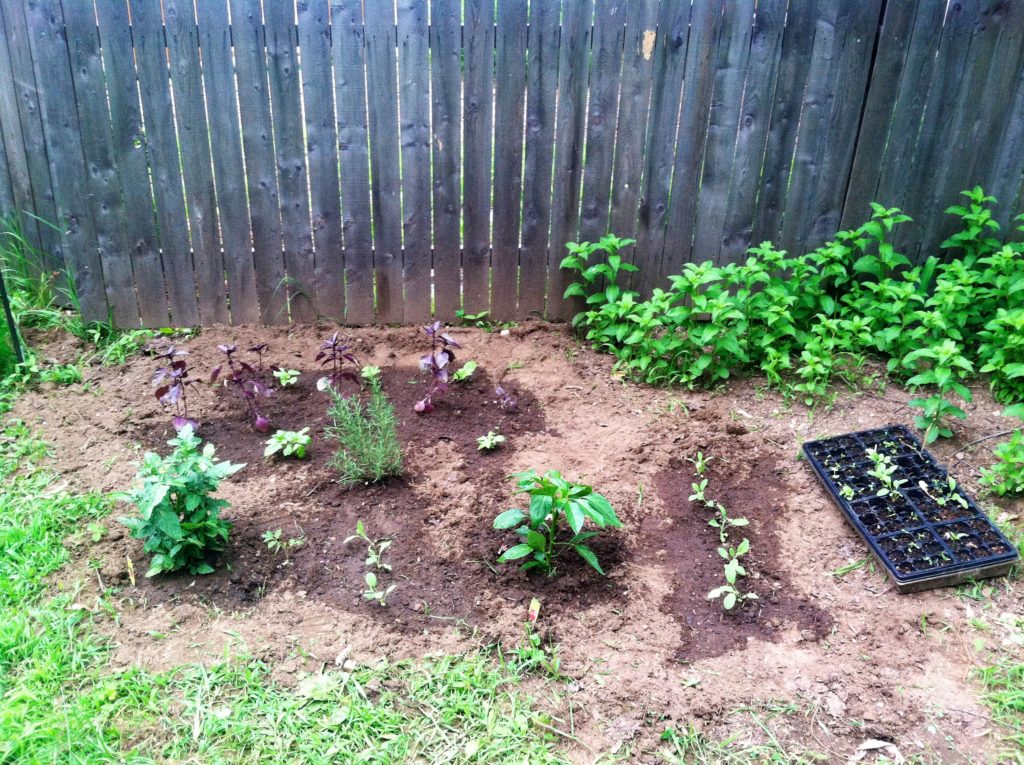
I found Sweet Birch in the fall of 2015 and added only my DIY chicken run that first year because I chose to watch the land before designing. I observed the sunlight patterns and tracked where the rainfall drained. I noted the slopes of the property and monitored how well the soil both absorbed and retained water. I filled a sketchpad with notes, site plans, bed sizes and plant species and in my second Spring, I began to play in the dirt.
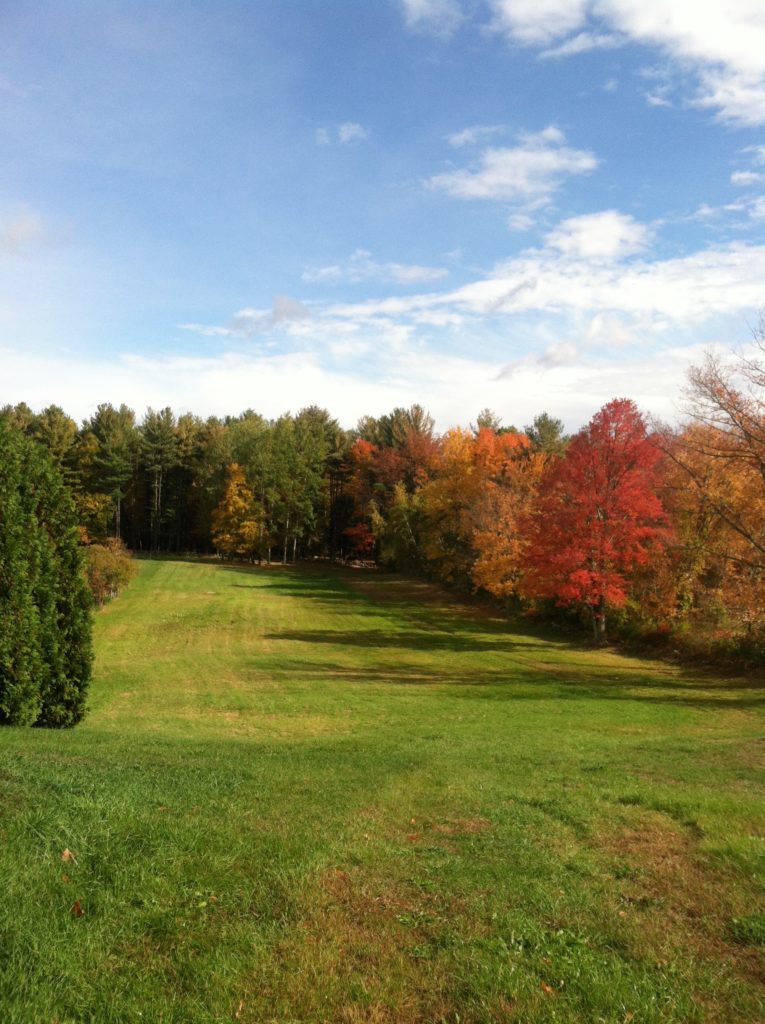
I decided on raised beds for various reasons. Firstly, I really like the neat and tidy look of straight and narrow garden plots. Secondly, the notion of minimal weeding is pretty alluring. For my beds, I sawed some old lumber to size, drilled in corner braces (4×4’s lopped to approximately 8″ in height) and dropped cardboard within the frames to smother the grass. I borrowed my dad’s truck and ordered some dirt and compost from a local farmer who loaded it into the bed with a little ski-doo. $50 later (for dirt. for DIRT) I returned home and dropped the rich soil atop the cardboard. wallah. My garden site was prepped and ready for planting. The entire endeavor from cutting the boards to dropping the soil was done in a day and I was planting seedlings that evening as the sun began to set in late May 2016.
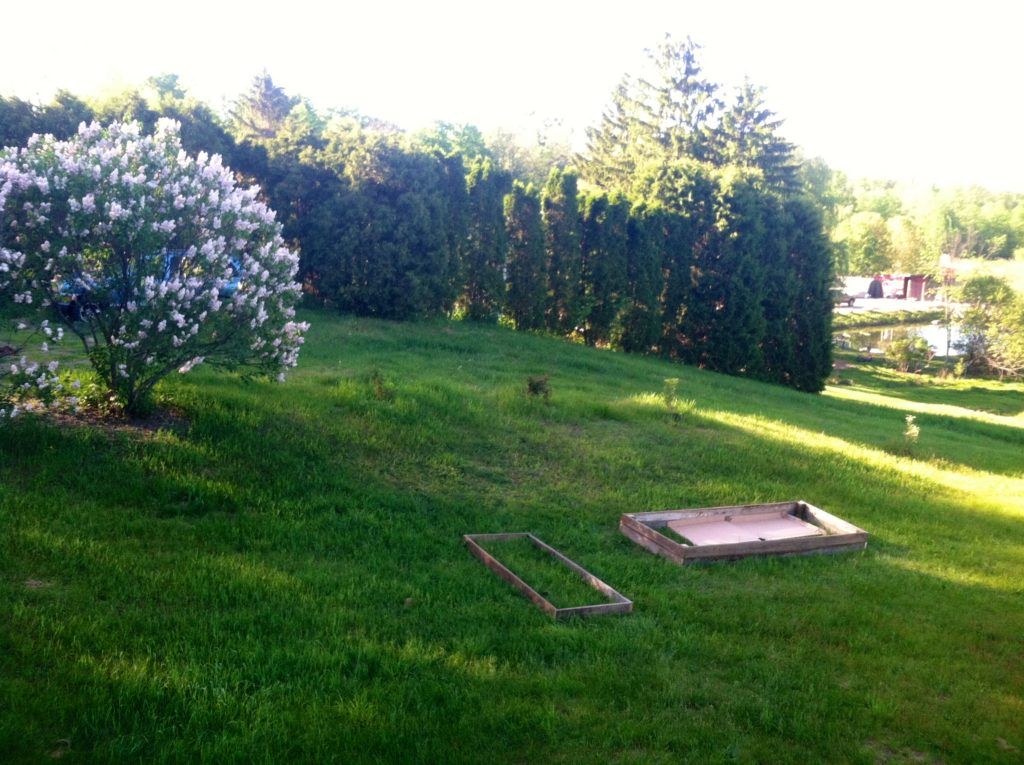
dropping cardboard 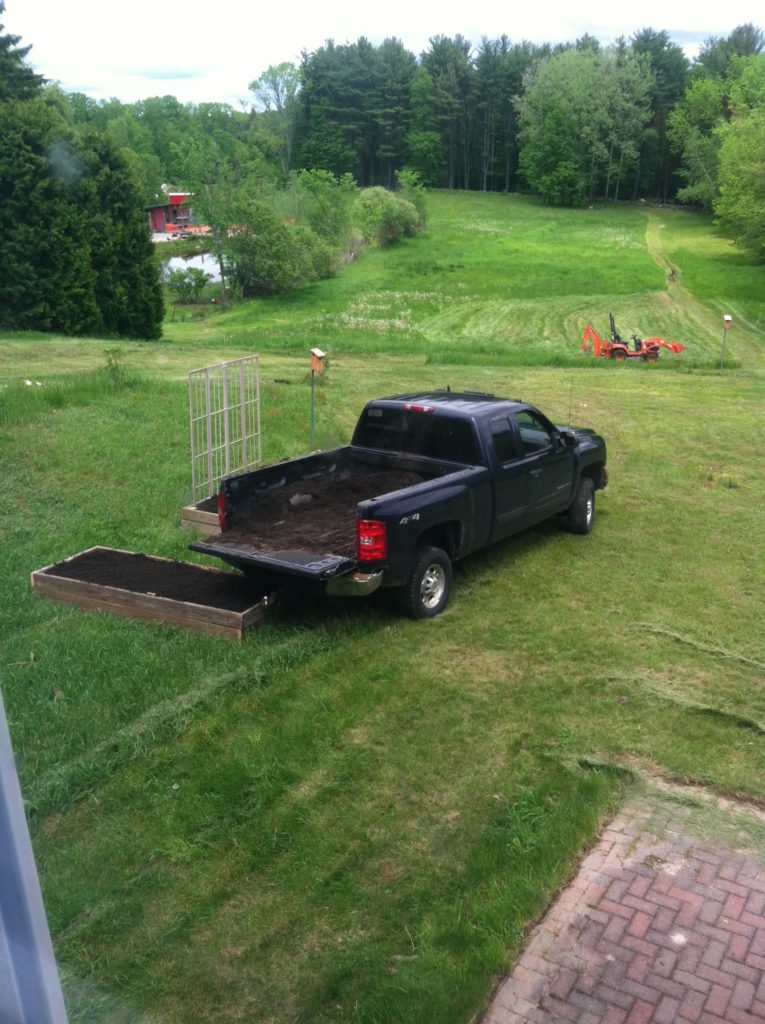
filling the beds 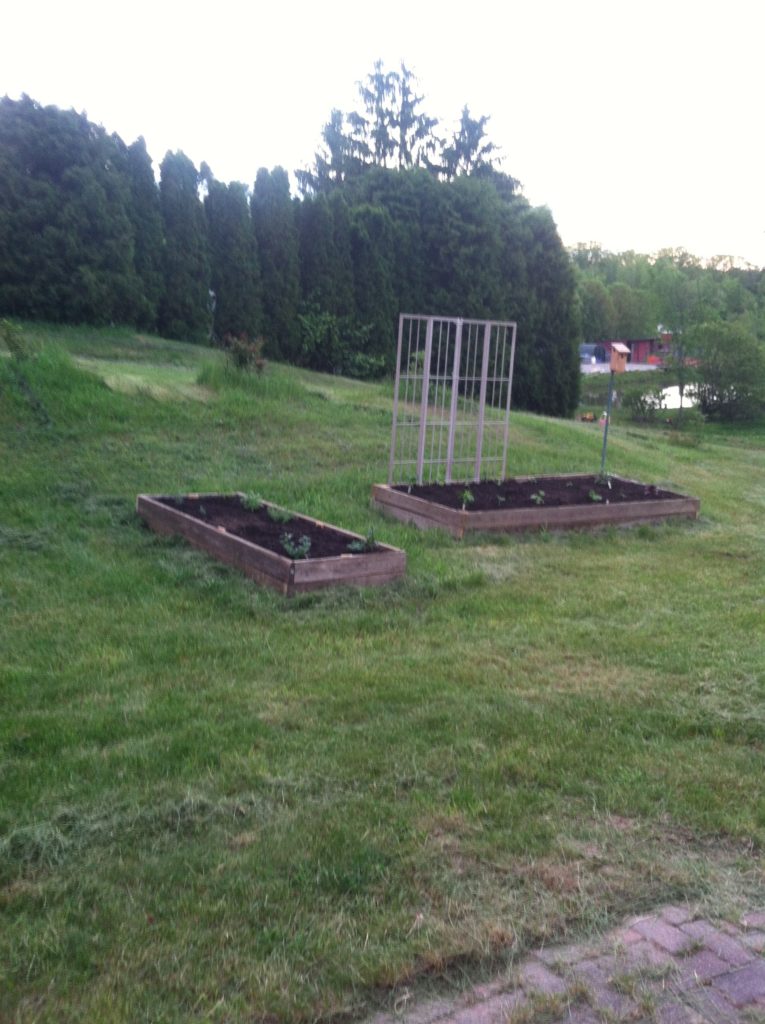
seedlings in
For those of you who already garden, you’ll understand this more than those who don’t (yet). Over the following weeks, I formed what I can only describe as a paternal relationship with my plot. I tended to it every morning before heading off to work and returned to it every afternoon. Oftentimes I would go directly from car to garden, leaning my slew of bags and totes against a wood-framed bed before immersing myself in the various tasks I’d find to keep me busy. My garden gave me purpose and I grew to love my new role as a garden guardian.
One of my favorite parts of playing make-believe horticulturist is watching seedings develop into maturity. This happens remarkably fast. The seedlings I transplanted from my growing tray were noticeably larger within days of submersion in the outdoor beds. Every morning I would note how a leaf had changed shape or a spindly stem had thickened and grown more robust. The chlorophyll-infused hues of aerial parts became more verdant as day length increased; the cheery lime of new leaves contrasting in both color and shape to the rounded, spinach green cotyledons below (cotyledons are the initial leaves that sprout from a seed).
In late-June, flower buds began to develop like silvery bells on the peppers and saffron slippers on the squash. When they bloomed, the garden came to life in a way I had not seen at my last abode.
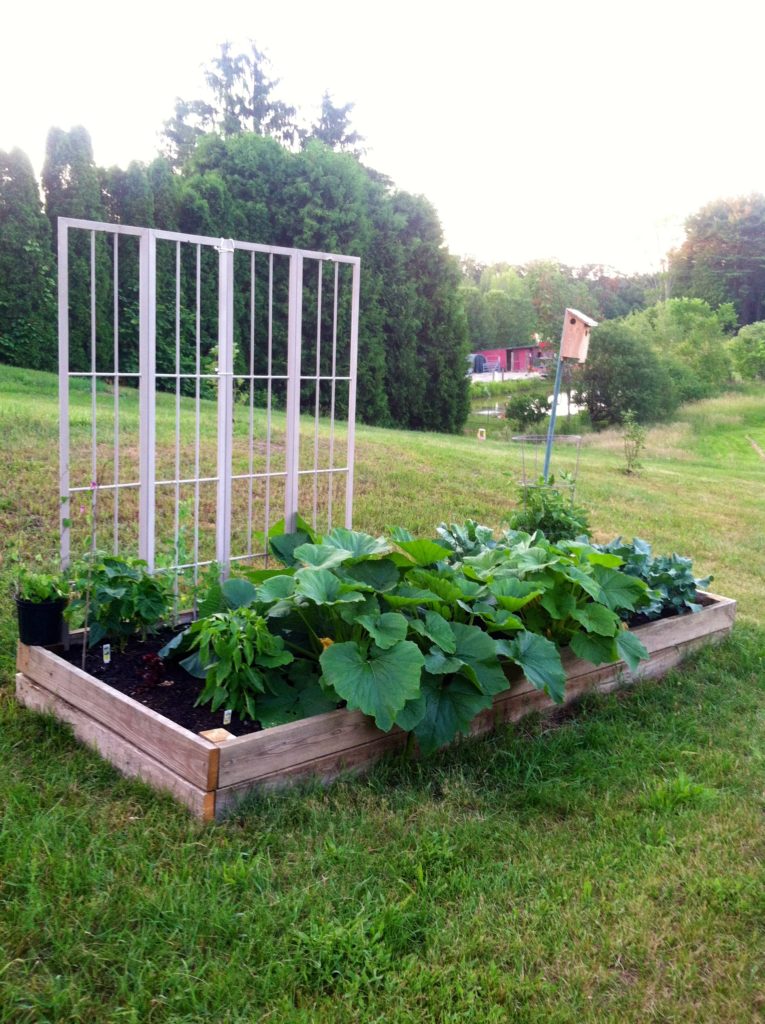
The garden was suddenly ebullient with the flashing of jeweled wings and the buzzing of focused flight. Pollinators in all their glory were notified of the new blossoms by word perhaps of the wind, and they flocked to the garden in droves. Butterflies flitted from herb garden to veggie bed, preferring the blossoms of the Korean licorice mint to anything else in the parcels but tasting everything available to them nonetheless. Tiny hover flies and cabbage moths, bumblebees and even bluebirds came in accordance with the blossoms’ development. The sudden energy was contagious and I found myself rejuvenated each morning as I stepped out to greet my garden familiars.
The plants, too, became more jubilant with their arrival. Flowers quivered as though suppressing laughter when a honeybee tickled their petals; and sage leaves bobbed like miniature surfboards when the pollen-encrusted creatures alighted atop them to tidy an antennae or adjust a basket. The bees arrived to the garden before I did in the early morning and departed, as though cued, when the tree swallows performed their final aerial waltz at twilight.
I was already planning on expanding when a Facebook post from a community page advertised free raised beds to the first taker. I responded immediately and was borrowing my dad’s truck once again to pick up the lumber from a nearby neighborhood. I framed and assembled the new beds before the first frost, dropped cardboard (and compostable paper plates from summer time festivities) and added a layer of chicken manure and grass clippings to keep my recycled lawn suppressants in place. When Autumn came around I gleaned the rest of my bounty, adjusted some notes in my garden journal, and put my current beds to rest.
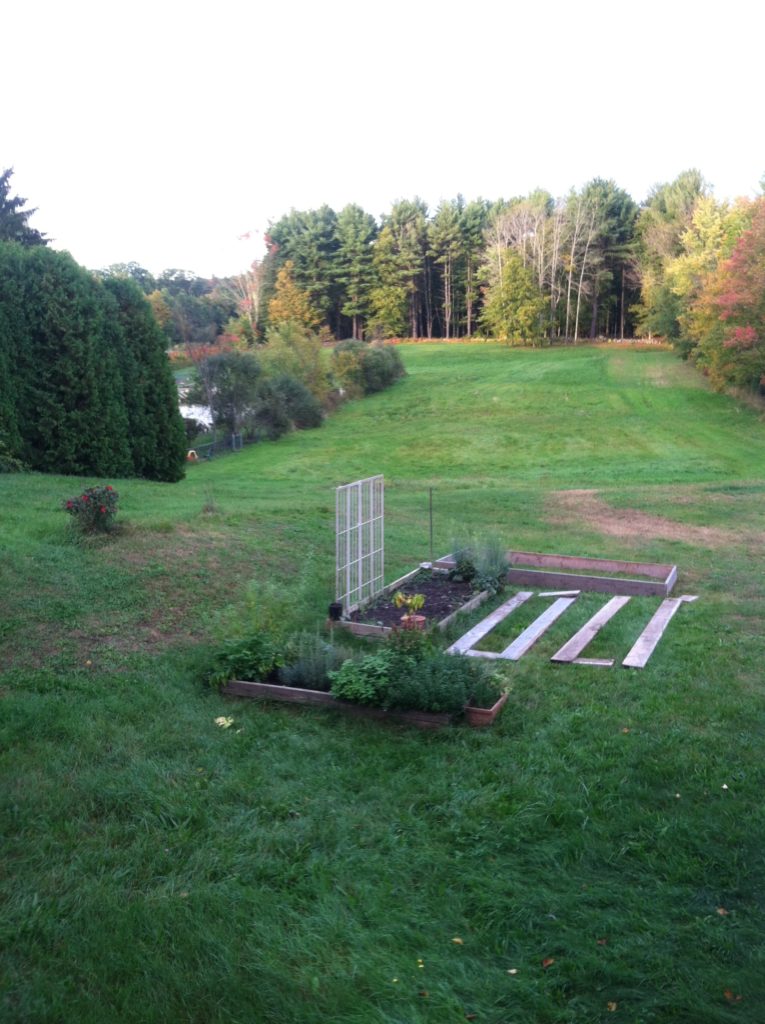
lay out plan 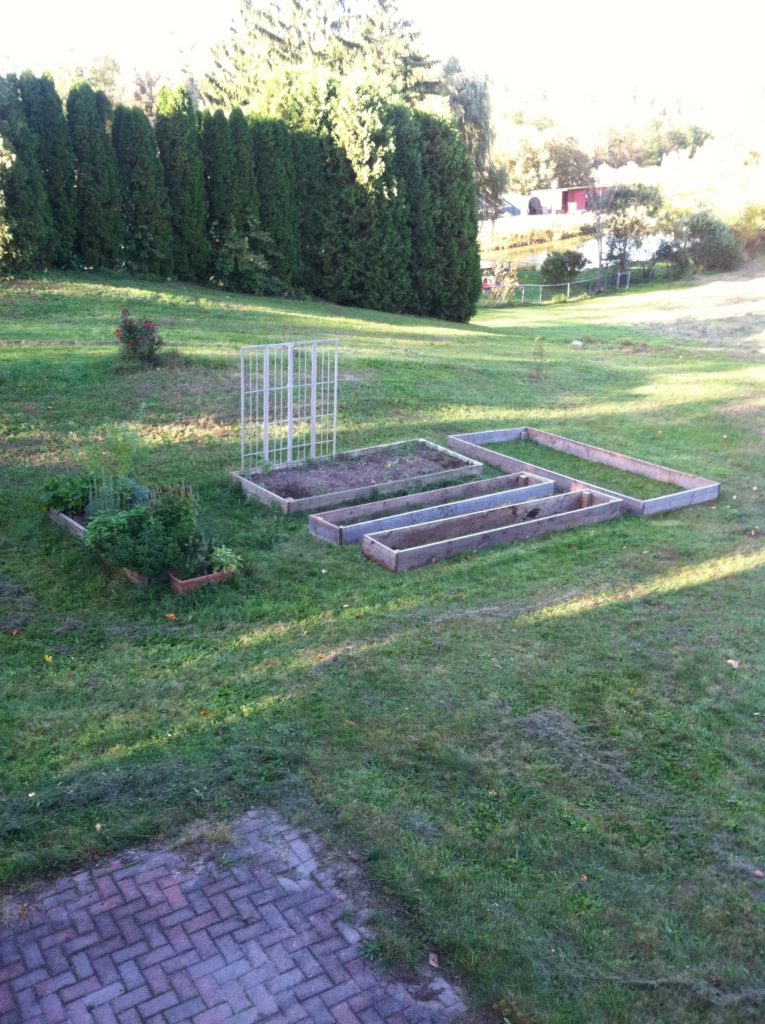
construct 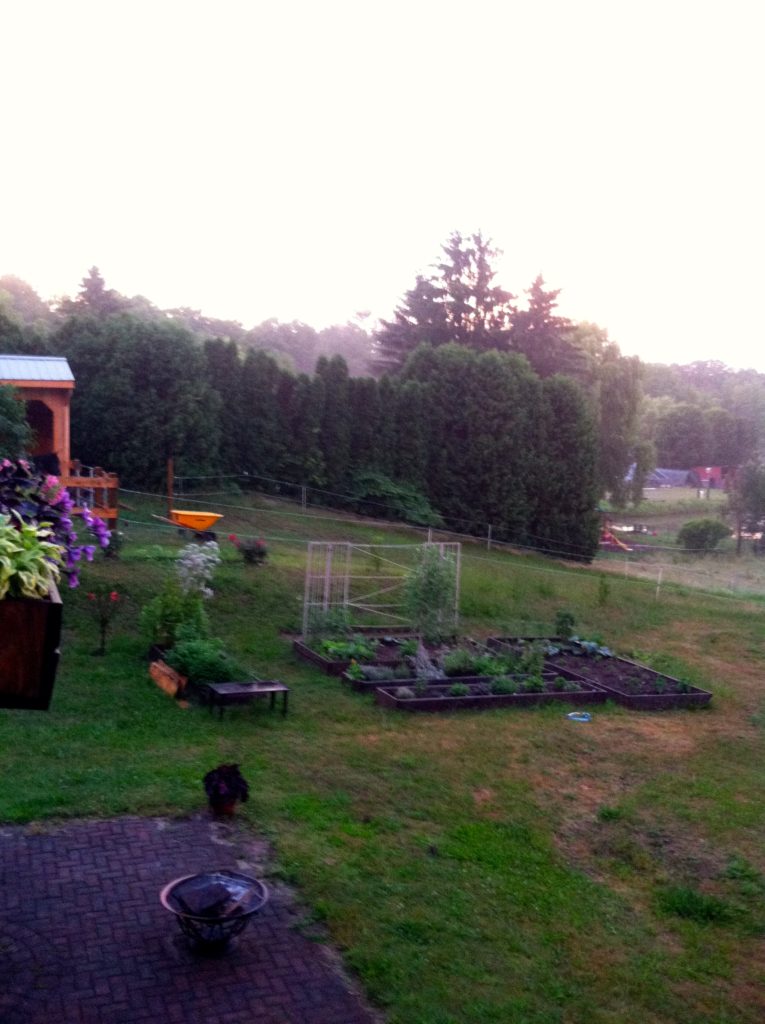
fill & plant
Being a rebel (read: impatient), I began transplanting my hardier seedlings the week before the recommended Zone 5b last frost date of Memorial Day. My perennial herbs were already up and flourishing and the cold crop plants were a couple inches high having sprouted around Cinco de Mayo. I had a backup plan in case the temps dipped low (and will have a blog post for that quick and easy trick) but was confident that my young plants would be just fine in the coming weeks; our seasons, as you might have noticed, are becoming milder.
Our spring was in fact an easy one, void of sudden frosts and my crops did beautifully this second year. I had radishes and beets galore, various salad greens in abundance and sweet peas dripping from the trellis. My valerian grew taller than me and the bee balm behind it brought hummingbirds to my garden for the first time. Every perennial from the year prior bloomed. The mints and lambs ears, sage, thyme and lavender, lemon balm, hyssop…everything was both radiant and, coincidentally, purple-themed.
When early spring arrived I already knew what I was doing with my beds having filled those long winter nights with books on companion planting, integrated pest management and crop rotations. I got right to work with sowing my cool crop seeds in the original beds in late April while amending my soil in the new beds after receiving another load of dirt from the same greenhouse as the year before. This year’s compost blend was a bit rockier than the original purchase and wasn’t as rich as the year prior either but I mixed in the (now-aged) chicken manure/ lawn clippings blend and the soil fluffed right up.
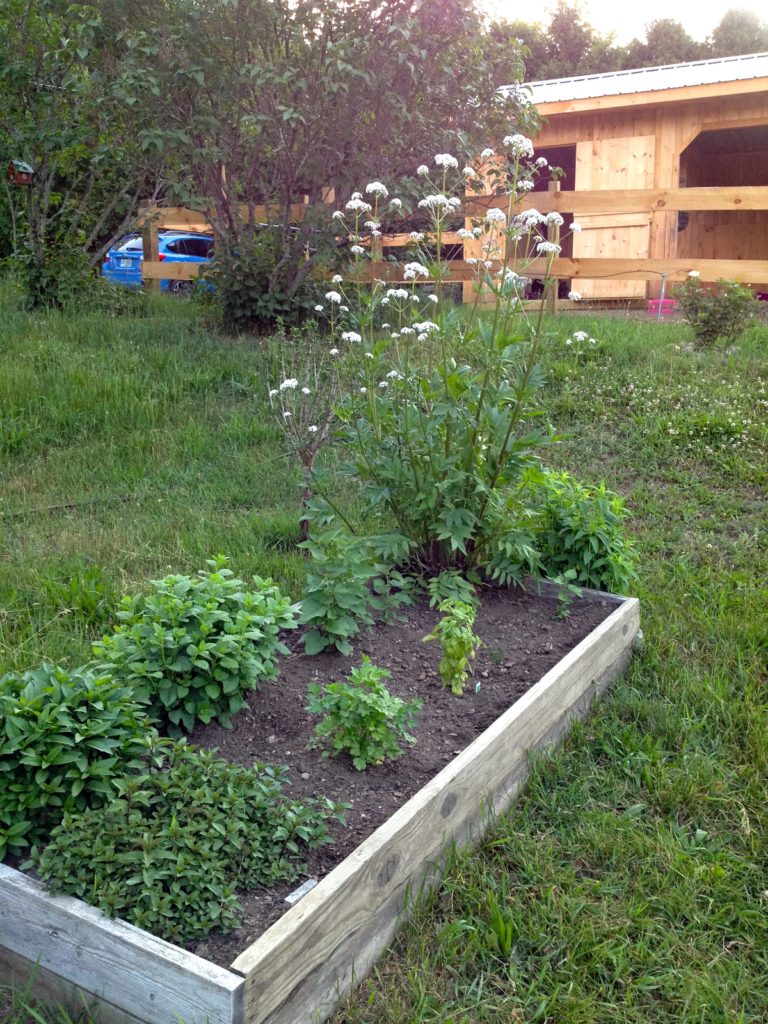
herbs in early spring 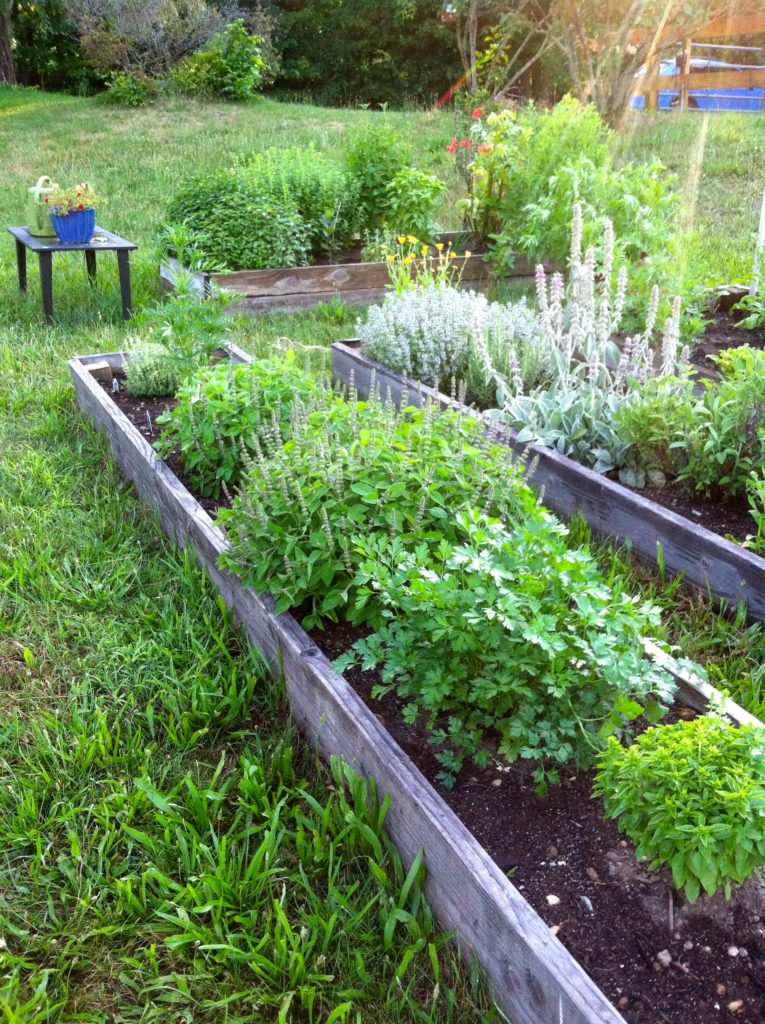
herbs in mid-summer
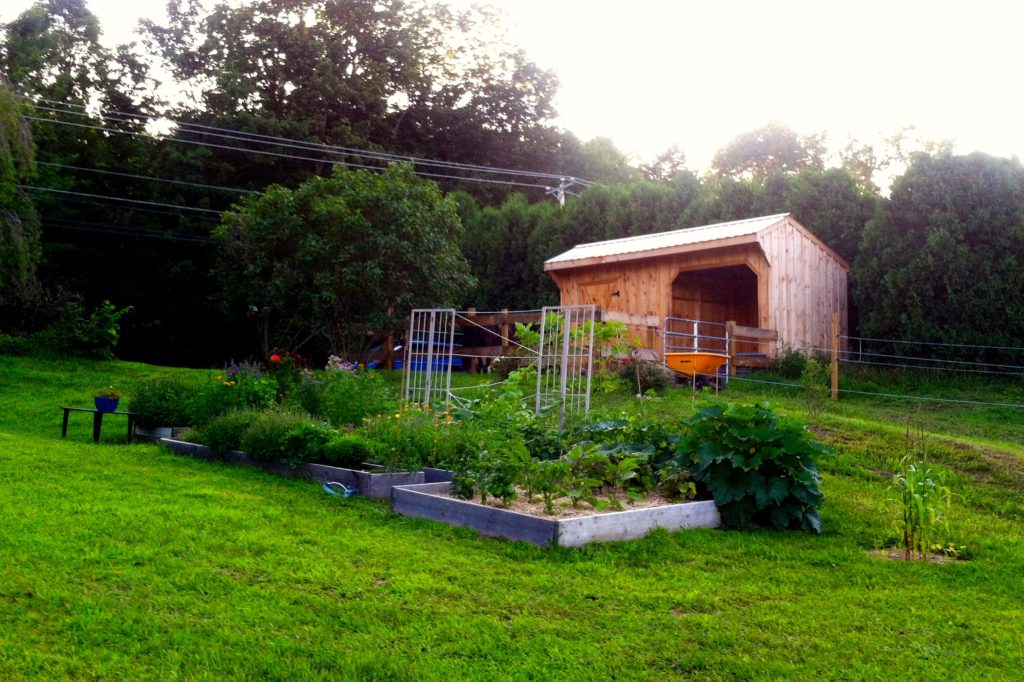
We had a viciously hot and humid summer starting in August and when it got wet, things got a little challenging. Mildew sprouted on my cucumber leaves and the zucchini fell victim to a vine borer and was decimated before I correctly identified and resolved the problem. Neither my sweet nor ornamental corn grew higher than 3′ in height and the climbing beans in the 3-Sister’s Garden bloomed but never produced.
Not all was lost, however and I did harvest about one hundred sugar snap peas, and more lettuce than I could consume. I pulled dozens of beets for pickling and produced the best pepper crop I’d ever had, with the fruits turning color on the vine rather than on my windowsill. My Roma tomatoes were tough but made an excellent salsa, and the Cherokee purples were delicious cut fresh, just dripping with flavor. The purple bush beans were overly abundant but stored well in the fridge and I gave these out to friends and family as I picked about a handful each day that season.
My tulsi and sweet basil were out of control and eventually I grew tired of pinching back their flowers and surrendered them to the honeybees. The peppermint and chocolate mint were, per usual, vastly abundant and I trimmed these weekly, tossing the fragrant stems and flowers to the hens who would shuffle it about in their run and perfume the air in the yard. The only herb that didn’t thrive was the bay leaf, where, because of poor planting, it didn’t receive adequate sunlight once the Korean licorice mint became grand. My calendula sprouted everywhere I tucked it and by continuously dead-heading I was able to keep blossoms well into mid-September as I was harvesting the last of the epic eggplant crop.
I replaced the dying cucumber plant with arugula, spinach, beets and radish seeds for the coming fall and began to watch for pests as my plants were growing weak with the passing of summer. As expected, squash bugs showed up and with then late-season cucumber beetles. I did my best to hand squish these pests and removed infected plants as needed.
Eventually the garden slowed and the marigolds were the last bursts of color in an otherwise dreary plot. The purple petals of the mints and monarda had turned a rusty brown and the basil leaves were wilting in the cooler evenings. I harvested what I could and brought it indoors for sorting, giving the remaining annuals to the hens to dissect. I left my perennial herbs as they were, telling myself I would trim them when the inevitability of a frost was no longer deniable but tucked them in for added protection with raked leaves from the maples across the way.
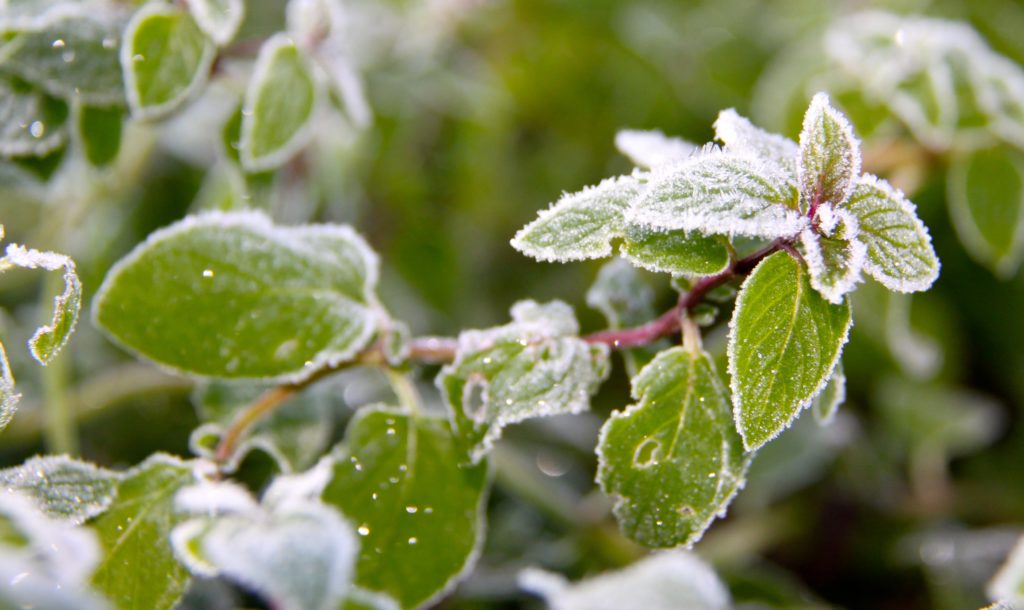
The frosts soon came and with them the final harvest of beets and radish. I decided to incorporate an in-ground garden to accompany my raised beds for the following growing season but a hard frost beat me to my design before I could finish. It now waits, incomplete, under a blanket of January snow.
So here I wait too, dreaming of new varieties and plotting battle against pests that undermine my horticultural endeavors. I read, I sketch, I try to embrace the winter but I’ve noticed that whereas years ago I eagerly anticipated the first snow, now I look to the first thaw with more excitement…
With the longer days comes the time and the temperatures conducive to improving old garden practices and experimenting with new methods. But for now, we rest, for in winter we reflect and recharge as we prepare for the coming season of rapid growth. As the plants must go dormant, so must we, to a degree.
Be well, be warm, be mindful, dear ones, and allow yourself this rest. It’s what Mother Nature recommends and Father Winter commands.
